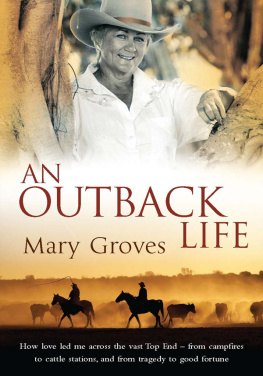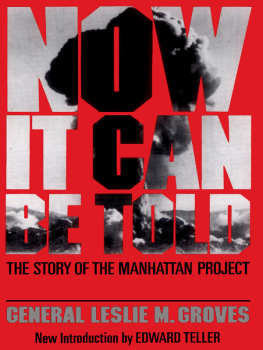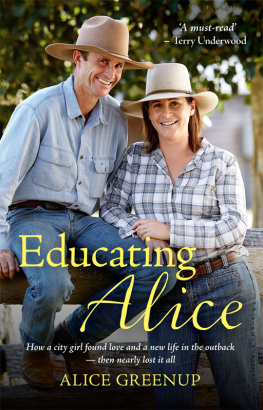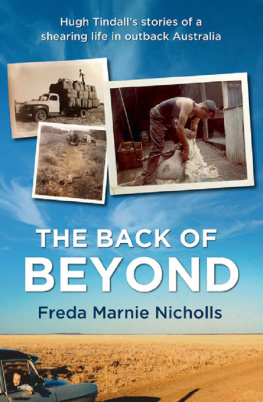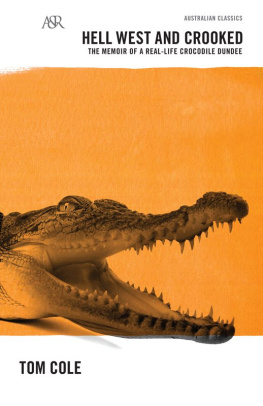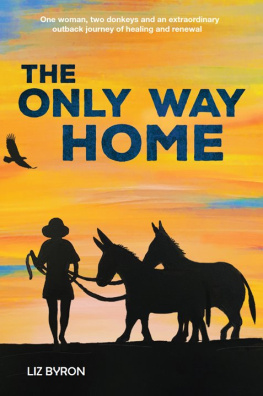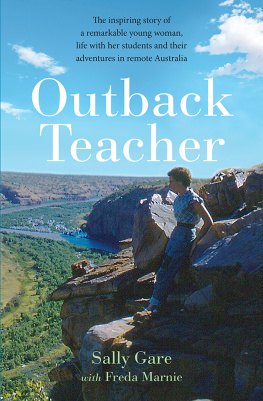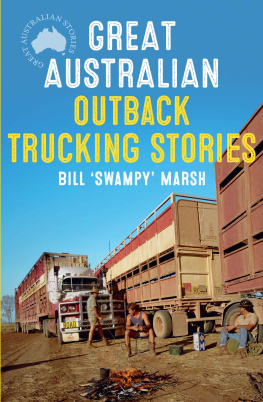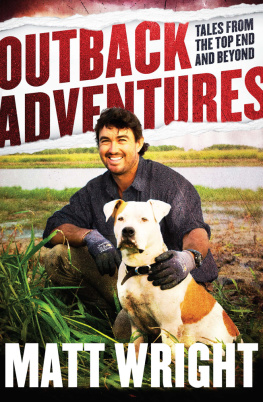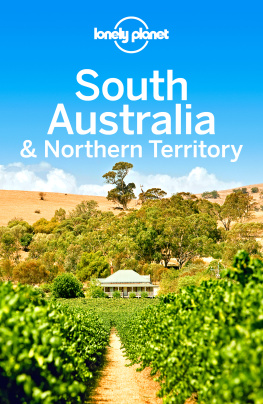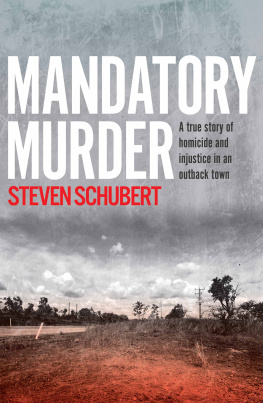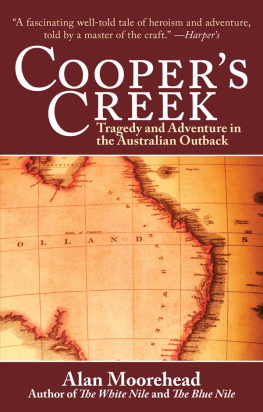WARNING
Please be aware that this book contains names and images of Aboriginal people who may now be deceased.
First published in 2011
Copyright Mary Groves 2011
All rights reserved. No part of this book may be reproduced or transmitted in any form or by any means, electronic or mechanical, including photocopying, recording or by any information storage and retrieval system, without prior permission in writing from the publisher. The Australian Copyright Act 1968 (the Act) allows a maximum of one chapter or 10 per cent of this book, whichever is the greater, to be photocopied by any educational institution for its educational purposes provided that the educational institution (or body
that administers it) has given a remuneration notice to Copyright Agency Limited (CAL) under the Act.
Arena Books, an imprint of
Allen & Unwin
Sydney, Melbourne, Auckland, London
83 Alexander Street
Crows Nest NSW 2065
Australia
Phone: (61 2) 8425 0100
Fax: (61 2) 9906 2218
Email: info@allenandunwin.com
Web: www.allenandunwin.com
Cataloguing-in-Publication details are available
from the National Library of Australia
www.trove.nla.gov.au
ISBN 978 1 74237 705 6
Typeset and eBook production by Midland Typesetters, Australia
Dedication
This book is dedicated to the memory of my amazing mother, Eileen Mary Elkins (nee Breen), who had faith in me completing this task; and to the support and endurance of my wonderful family who made this story possible. Thank you also to my sister Kate for her encouragement, and my cousins Ellen, Marian and Doreen who shone the light when I lost my way.
Contents
Foreboding overwhelmed me as the Cessna 310 continued to circle us again and again. What on earth was going on? Then a loud explosion shook the homestead. A rush of icy adrenaline coursed through my veins and I froze for a moment before dropping the phone and rushing through the back door into the garden to investigate.
My Aboriginal house girl Katie, clutching my baby, ran under the palms across the yard towards me, wide-eyed with panic.
That plane, missus, him been pinish up longa dam!
I will never forget those words. That planes finished up in the dam!
Cold with shock, I looked towards the dam, only 300 metres from the back of the homestead. I could see billows of black smoke. I had no idea what to do next, but I started to run.
Thirteen was a number that haunted our family and it was happening again on 13 March 1975, in the middle of the monsoon season, almost three months after the notorious Cyclone Tracy had devastated Darwin, some 260 kilometres by air to the north of us.
My husband Joe and I were managing Fitzroy, a cattle station west of Katherine in the Northern Territory. The property was 1001 square miles and consisted of rugged red escarpments and valleys of grazing areas that ran to the mighty but hostile Victoria River.
A group of agronomists and wealthy Americans, senior officials representing the Rockefellers Standard Oil Company, had arrived to do feasibility studies. They were looking at the prospect of growing sugar cane on Fitzroy, and in fact in the whole Angalarri basin that ran through to Kununurra in Western Australia. This cane would be used for sugar, ethanol and a new concept in hardwood building material. They were planning to utilise the water from the massive Ord River scheme at Kununurra. This ground-breaking venture would open up a whole new and exciting facet in the stagnant Territory economy.
Alan Chase, an ambitious American entrepreneur and part owner of Fitzroy Station, was behind the project. Alan had also been instrumental in attempts to grow rice in the Humpty Doo area in the Top End in the 1950s. The attempts had failed because of wild-geese invasions, but he nevertheless remained determined to break the age-old curse on Territory enterprise. I had received an excited call from him in America saying, Mary, make that place look like a million dollars, Ive got some big investors coming to visit.
How I was supposed to prepare for important visitors on our limited budget I had no idea, but I set about scrubbing, painting and rearranging bedrooms, finishing on the morning of their expected arrival by covering the bathroom walls with a bamboo print contact paper in an attempt to camouflage the gaping cracks in the fibro walls.
The group landed on the muddy airstrip just in time for lunch, and our quiet off-season operation immediately went into overdrive with introductions, suitcases, cool drinks, endless telephone calls, lunch, sightseeing and afternoon tea (or smoko, as we called it). Eventually the congestion eased with several visitors departing that afternoon, leaving four fellows to work on the station with us for ten days.
Many times in the past, we had dragged our beds out onto the front lawn when the heat in the house made sleeping impossible. I worried about the visitors bunking together in the only two rooms available in the hot fibro homestead.
Do you think youll handle the heat okay? I asked as I showed them to their accommodation.
Sure, weve been in hotter places than this, they assured me.
They were a great bunch of blokes: Dick was young, blond and good-looking in his early thirties, and Ralph and Glen were both comfortable, well-travelled middle-aged men. And then there was Walter. At thirty-eight, he was a confident, tall, dark-haired, handsome man with a high intelligent forehead, and I was immediately attracted to the twinkle in his eyes. When we first met he had grasped my hand firmly for that extra second, and it was obvious that the attraction was mutual.
Pleased to meet you, Mary, hed said, but whats a good-looking girl like you doing hidden away in a place like this?
Hmmm. I reckon that unfamiliar compliment and the little bottle of Wicked Wahine perfume that he had brought me from Hawaii won my heart immediately. I figured then that a little harmless flirtation never hurt anyone not anyone with brains, anyway. As always, my typically Australian, ruggedly handsome husband made it glaringly obvious that he was the boss rooster in our hen house, but still I hoped that Walters gift-giving would set a good example.
I saw very little of Joe as the days flew by, catching up only at mealtimes and to sleep. These were exciting times and he was enjoying the new challenges. There were sugar cane tests planted in the backyard, and maps lay everywhere supporting the endless in-depth discussions and phone calls. The Yanks had all fitted in comfortably with the pace of station life and were more seasoned than we had imagined. They not only managed to sleep in the heat but they lined up for the shower like everyone else. They too were soon hanging out for the daily bread bake, seduced by the aromas from my busy kitchen. Like everyone else, they relished the mounds of home-baked cakes and desserts, the limited fresh vegetables, and the endless meals of beef, cooked in every way imaginable to avoid monotony. They also welcomed the occasional silver barramundi or black bream that some lucky fisherman was usually able to snare.
All too soon the group was preparing for their departure back to America.
On the evening of 10 March we threw an impromptu going-away party. The children Paula, eleven, Joey, eight and Stephen, six had designed a little concert as a present for their new American friends, at which they sang and recited their classic Aussie poetry. Although Mary-Lyn was only a toddler, she was still a very cute part of the chorus.

